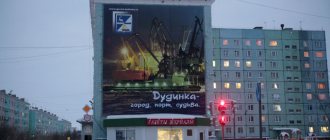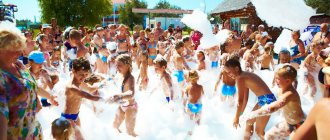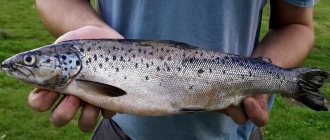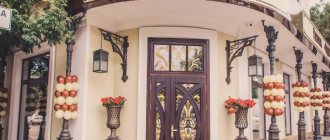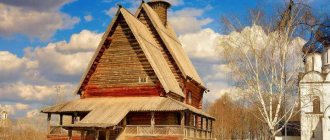Together with Irina, a teacher from Balashikha near Moscow, we will visit Grodno, in the very west of Belarus. This city is not like other Belarusian cities. The proximity of Poland and Lithuania left its mark on it. The magazine Dorogi-ne-dorogi.ru tells what a tourist should do in Grodno and why it’s worth going there at all.
I went to Grodno alone and in my own car. I like to plan trips on my own, so here I did everything myself from the very beginning. In this article I will share my experience with you.
Why did I go to Grodno
My work colleague often mentioned this city in conversations and always used only kind words and superlatives. I decided to make sure that it really was as wonderful and interesting as he said. The name of the city also caught my attention, I don’t know why.
I planned the trip for my next vacation. It was November last year. I was surprisingly lucky with the weather, and I spent five days of real golden autumn in Grodno. It took another two days to travel there and back.
I went on a trip alone. This was the first trip alone, and even while driving.
Attractions in the surrounding area
Tourist complex Korobchitsy
Address: Koptelsky village council, agro-town Korobchitsy Phone: +375 15 293‑94-00, +375 29 357‑10-81 Website: maentak.grodnomk.by Opening hours: Wed-Sun 10.00-18.30 Cost: adults - 5 bel. RUB, children - 2.5 BYN. RUR How to get there: by car 11 km along the N-6453 highway towards Chekhovshchina (18 min.), by bus (36 min.)
The complex is an estate-museum. There are buildings in the style of a country estate from the 15th to 19th centuries.
Most of the territory is occupied by a nature reserve, which is home to roe deer, hares, moose and deer.
Various competitions are held here on weekends.
Lida Castle
Address: pos. Lida, st. Castle Phone: Website: https://lixmuseum.by/ Opening hours: Tue-Sun 10.00-18.30 Cost: 9 bel. rub. How to get there: by car 112 km (1 hour 18 minutes) along the P-42 highway towards Ditva, by minibus from the bus station (1 hour 50 minutes)
The castle was built in 1328 by order of Prince Gediminas. It is a monument of defensive architecture. After the destruction by the Swedes in 1702, it ceased to have a defensive function and was almost completely destroyed.
Today the fortress is part of the Museum of Local Lore, where an exhibition of torture instruments from the Middle Ages is presented.
Castle Hill (Novogrudok)
Address: Novogrudok, st. Small Castle How to get there: by car 150 km along the P-42 highway to Ostrin, then turn onto the P-51 highway, after Kovchik onto the M-6 highway (2 hours 20 minutes), by bus (3 hours 32 minutes)
The castle was founded in the 11th century and was built of wood. Only in the 16th century after reconstruction it turned into a defensive fort. But in 1701 it was destroyed and plundered by the Swedes.
The ruins of the castle are in need of reconstruction. The church tower has been covered with bricks to protect itself from destruction.
Since 2000, a festival of Medieval culture has been held on the territory.
Road to Grodno
Belarusian roads / photo by the author I
traveled to Grodno with an overnight stay in Minsk, since covering almost 1000 km alone is not very easy.
The quality of roads in Belarus is higher than ours. Permitted speed is 120-130 km per hour. But for violations the fines are brutal. We had to pay 2,000 of our rubles on the way back, before crossing the border.
Belarus has its own currency. At the time of the trip, the exchange rate was as follows: 1 Belarusian ruble = 31 Russian rubles with kopecks. There were no problems with banks and exchangers.
Where did I live
I found the accommodation on Booking.com. It was a separate apartment in the very center of the city. I don’t like hotels and hostels, they are full of tourists and bustle.
I stopped on Stefan Batory Street, next to the Farny Church. The hostess met me at the entrance, showed everything and was surprised that I chose Grodno for vacation, and not some Turkish beach. I gave away the keys. I didn’t see her again until the day I left.
The apartment turned out to be clean, comfortable, with wi-fi, and all the main attractions were within walking distance. Accommodation for five days cost $120 (paid in Russian rubles).
Cafes and restaurants in Grodno
In one of the Grodno restaurants / photo by the author
When you live in a separate apartment, you have the opportunity to cook on your own. The kitchen was equipped with everything necessary. I mostly cooked breakfasts and dinners, and usually had lunch in the city.
Belarus has amazing dairy products, sausages, and all other products too. Therefore, you should definitely try local cottage cheese, sour cream, kefir or yoghurt for breakfast. The store on the ground floor of the house where I lived always had fresh and tasty products.
During the trip I visited several cafes and restaurants:
- Lamb,
- Neman,
- Royal hunt,
- Garadzen coffee shop,
- Just coffee.
I’ll share the secret of saving: in any restaurant in Grodno from 12:00 to 15:00/16:00 there are set lunches. Their prices are lower than the main menu.
Lunch cost me, on average, 5-10 Belarusian rubles (depending on the restaurant).
the Royal Hunt restaurant Chic, truly royal interior and menu with dishes of Belarusian cuisine. I recommend trying potato pancakes with cheese and lightly salted salmon, pheasant julienne and pancakes.
I also liked the “Garadzenskaya Kavarnya” (Grodno coffee shop). Atmospheric place next to the Farny Church, excellent coffee and desserts. You can sit with a book or just look out the window, watching the life of the city.
Historical sites and museums
Gorodnitsa History Museum
Address: st. Ozheshko, 37 Phone: +375 15 272‑16-69 Website: museum-grodno.by Opening hours: Tue-Sun 10.00–18.00 Cost: from 2 to 20 bel. rub.
The museum building is the first in the city built according to standard housing development. In another way, the museum dedicated to the life of the reformer and headman of the Grand Duchy of Lithuania, Anthony Tyzenhaus, is called the House of the Master.
The exhibits include a model of the center of Grodno in the second half of the 18th century; some exhibitions are devoted to goods from trade manufactures and own production.
It is a branch of the Grodno State Historical and Geographical Museum.
Grodno Fortress
Coordinates: 53.7108, 23.6795 How to get there: by car or bus from Grodno you need to take the road N-6453 to the village of Strelchiki
The fortress is a system of fort buildings, the first structures of which were erected in the 12th century.
In 1915, there were more than seven hundred artillery pieces here, but after the German offensive, the Russians abandoned the city and the fortress. Forts were used for defense in the First and Second World Wars.
Old Royal Castle
Address: st. Zamkovaya, 22 Phone: +375 15 274‑33-60, +375 15 274‑08-33 Website: museum-grodno.by Opening hours: Tue-Sun 10.00–18.00 Cost: from 4 to 20 bel. rub.
The castle was built in the 11th century on the right bank of the Neman. Construction took place on the site of an old fortress; the castle was often attacked, which led to destruction. It was restored 47 times.
Until the 14th century, the buildings were wooden, but after a big fire that destroyed most of the buildings, it was decided to build from stone. It never returned to its former significance after the destruction suffered in the Northern War. The current authorities want to return the castle to its original appearance.
Now the Grodno Historical and Archaeological Museum is organized here. Its exhibitions present the history and culture of Grodno, the nature of the Prineman region; most of the fund is occupied by objects and history of the 14th-17th centuries.
A separate exhibition is the site of archaeological excavations on the ruins of the Lower Church of the 12th century. It is officially recognized as a monument of the Grodno architectural school.
New castle
Address: st. Zamkovaya, 20 Phone: +375 15 274‑39-14, +375 15 274‑33-60 Website: museum-grodno.by Open: Tue-Sun 10:00–18:00 Cost: from 4 to 20 bel. rub.
After the destruction of the Old Royal Castle, Augustus III ordered the construction of a new residence opposite. Initially it was intended for summer holidays and receiving high-ranking guests.
During the Great Patriotic War, most of the decorations and furniture were destroyed and stolen. During the retreat, German troops burned the castle. They restored it in a different style.
The Ministry of Culture, which received the castle in 1991, adapted the main building and the left wing for the needs of the museum.
Nowadays thematic excursions are organized here:
- “New castle. Events and fate",
- "Sacred Art"
- "Saved Values"
- "Weapons of Past Centuries"
- "The amazing world of nature."
Grodno Kunstkamera
Address: st. Karl Marx 1 Phone: +375 15 272‑13-78 Opening hours: Wed-Sun 12.00–18.00 Cost: 5 bel. RUR, free for orphans, pensioners and disabled people
The museum was opened in 2012, and all exhibits were provided by the local medical university. Some specimens are over 100 years old.
The exhibition itself is located in the university building, which is a historical building from the 16th century.
It is believed that it was here that the autopsy of the body of the king of the Polish-Lithuanian Commonwealth Stefan Batory was performed. This procedure is considered the first of its kind in Europe.
The Kunstkamera is divided into two parts: normal and paranormal anatomy, more than 70 items in total. These include: “Siamese twins”, “mermaids”, “two-faced Janus”, “cyclopia”, “anencephals”, fetuses with various malformations.
For the collection, exhibits were delivered from Moscow, St. Petersburg, and other cities during the Soviet Union. The collection stopped being replenished in the early 90s of the 20th century: due to the development of medicine and the emergence of new technologies, pathologies have become rare in the modern world.
Pharmacy Museum
Address: Sovetskaya Square, 4 Phone: +375 Website : am.biotest.by Opening hours: Mon-Fri, 9.00–19.00 Cost: free admission
The pharmacy is the oldest in Belarus. The first mention of it is in documents from 1687. The museum is located in the building of a former Jesuit church.
The exhibitions are divided into three topics:
- history of the development of pharmacy business,
- recipes and medicines used to treat in the 17th-19th centuries,
- pharmacy equipment and utensils.
During Soviet times, the building was occupied by a hardware store, a warehouse and a teacher's house. Only in 1996 did the city authorities decide to return the existing pharmacy to the church and establish a museum.
Water towers "Kasya" and "Basya"
Address: st. Sverdlova 2
The towers, more than 20 meters high, are a monument of industrial architecture. In the Soviet Union they were the only water-pressure buildings standing next to each other. Now they house art workshops.
The names Kasya and Basya translated from Polish into Russian mean Ekaterina and Varvara.
According to legend, a water utility accountant named Basya used to work in one of the towers, and Kasya, the caretaker, worked in the next one. They were the only women among the men, so the buildings were named after them.
What to see in Grodno
Farny Church in Grodno / photo by the author
Farny Church is a must-visit place in Grodno. It is also called the Cathedral of St. Francis Xavier. It's impossible to pass by. The cathedral is monumental and beautiful. The live organ and chanting kept me coming back every day.
Church of St. John / photo by the author
Church of St. John (Lutheran Church). It is better to plan your visit so that you can attend an organ music concert. The time can be viewed on the website.
Parc Gilibert is good for walking. Hundreds of plant species, benches, bridges, paths, beautiful views - everything is in place and done with taste. The park is associated with the name of a French doctor who lived in Grodno and created this park. Nearby is the Lyalek Theater (puppet theater), there are attractions.
Kolozhsky Park and Friendship Square. 35 trees were planted there as a sign of friendship between the peoples living in Belarus. Every two years the Festival of National Cultures is held in Grodno. I planned to come to the city again in the summer, but due to the pandemic, the festival was postponed. Usually all major events are held in this park.
Boris and Gleb Church / photo by the author
Boris and Gleb Church (Kolozha) of the 11th century is the main value of Kolozha. It is located on the high bank of the Neman River. The view from there is dizzying. And I have never experienced such peace and cloudless happiness on any of my trips.
By the way, about the Neman itself. From the opposite bank of the river there is also a magnificent view of the entire historical center. And the observation deck was given to city residents for one of the holidays. In general, there are many such cute little things in Grodno that create the atmosphere. Just look at the trash cans in the shape of dogs or men's vests with bows.
The Great Choral Synagogue - you can’t help but notice it when leaving Kolozhsky Park. I went to the museum, where they allowed me to see all the exhibits for free and told me about the ghetto that was here during the Nazi occupation. The synagogue was located in the very center of the ghetto.
Sovetskaya street / photo by Alena Patrikeeva
Pedestrian street Sovetskaya is one of the oldest in the historical center, an analogue of Moscow Arbat. It is replete with street vendors and musicians, catering establishments and shops. Stop by the Raskosha coffee shop and pastry shop , opened in 1795. Try their cakes and pastries.
This time I didn’t get to the Old and New castles on the banks of the Neman River. There was reconstruction there. I left it until my next trip.
In general, the whole of Grodno is one big attraction that cannot be seen in one trip.
Grodno churches and monasteries
Religion has always occupied and occupies one of the main places in the life of the city. In Grodno, churches of different faiths stand next to each other, and pilgrims from different countries come to touch the shrines.
Holy Intercession Cathedral
- Address: Ozheshko street, 23.
It was built at the beginning of the 20th century in memory of the officers killed in the Russian-Japanese War. The prototype for it was the regimental church of the Caspian Infantry Regiment in Peterhof, and thanks to the art of the military engineer I. Savelyev, the temple acquired special features inherent only to it.
The garrison temple complex managed not only to survive the maelstrom of events that abounded in the 20th century, but also to become a Cathedral complex. Even during the fascist occupation, prayers and services were held here weekly.
The appearance of the cathedral resembles a tower in the neo-Russian style, decorated with candle bell towers and dome crowns. And the decorative elements decorating the outside of the temple were widespread in ancient Russian architecture. Due to this mixture of styles, it looks especially majestic.
The interior decoration is dominated by wood, and the space of the cathedral is divided into three parts by arcaded columns. The ceiling is decorated with ancient Russian script, the walls are painted, and the floor is covered with tiles with intricate patterns. The iconostasis and altar are made of wood, tinted brown and covered with gilding.
The cathedral houses one of the main shrines of the Christian world - the icon of the Kazan Mother of God. During the First World War, they wanted to take her out of the temple and hide her in the Russian outback, but they couldn’t even move her. It is believed that it was she who protected the temple in troubled times. Here you can also venerate particles of the relics of the infant martyr Gabriel, Nicholas the Wonderworker and some Belarusian saints.
Franciscan Church
- Address: Ogorodnaya, 2.
Initially, it was a Catholic monastery complex, which was built on the left bank of the Neman by Evstachy Kurch and his wife in 1635. But, being wooden, it was destroyed during the Russian-Polish war. And in 1660, the construction of a new stone monastery began with money donated by the governor Mikhail Pats and the sub-capital Gideon Khlyadovitsky.
The new complex was surrounded by a fence with a gate and included a small church, a residential building and a bell tower. In 1759 it was rebuilt again after a fire befell it.
From the middle of the 19th century, the monastery was closed, and after the Polish uprising it was used as a prison for clergy until 1919. Then the building was returned to the Franciscan monks, and it still belongs to them.
This three-nave basilica evokes admiration at first sight. The Baroque style decoration is replete with many decorative elements, cornices, and pilasters. Inside, the church amazes with its luxury, achieved through a combination of architectural plasticity, painting, and modeling.
Antique icons, a carved altar screen in the Rococo style, decorated with gilded vases and busts, paintings, icons, including the Mother of God of Czestochowa and the miraculous Mother of God of the Angels - the main shrine of the monastery. An organ was installed here at the end of the 18th century, which is the oldest in Belarus. It was built in Prussia and cost more than 3.5 thousand zlotys.
Lower Church
- Address: Zamkovaya, 22.
This church was discovered in 1932 during excavation work on the territory of the Grodno Detinets and today is considered the oldest Christian church in Belarus. The date of its construction is unknown for certain, approximately 1150-1175, but all historians call the date of destruction 1183.
It was then, according to the Ipatiev Chronicle, that a fire occurred in Grodno in which the temple burned down. Later, its walls were covered with sand and during the reign of Vytautas, a new, Upper, church in the Gothic style was built on this site. Today, the lower temple is covered with a pavilion and is included in the exhibition of the archaeological and historical museum.
Great Choral Synagogue
- Address: Bolshaya Troitskaya, 59A.
Throughout the history of its existence, the Grodno synagogue was accompanied by fires. The very first, wooden one, was built by the Jewish community at the end of the 16th century. To do this, she had to take special permission from the Lithuanian Prince Vytautas. In 1575, a stone one was erected according to the design of the Italian architect Santi Gucci, but already in 1617 it was completely destroyed by fire.
Soon Sigismund III gave permission to build a new synagogue on the same site. But she didn’t last long either. In 1899, she repeated the fate of her predecessors. The modern synagogue was built in 1905 by the architect I. Frumkin, who used the remains of old walls, introducing elements of the Moorish style into them.
During the Holocaust, the building served as a collection point for Jews before being sent to concentration camps and gas chambers; after the war, it was used as a warehouse and workshops. And only in 1991 the Jewish community was able to regain the shrine. During this time, not only the appearance of the building suffered, but also the interior decoration.
But even despite this, the synagogue continues to amaze with its grandeur and leave a mark on the souls of people of different religions. Today, restoration work is underway and there is a museum of the history of the Jewish community of the Grodno region.
Impression
Grodno, view of the old castle / photo by Alena Patrikeeva
One of the most vivid impressions of a trip to Grodno was the Farny Church.
I have a comical incident connected with the church. One evening I went to the service to once again listen to the organ, and was so carried away by the music and chants that I did not notice how the church was half empty. Heading towards the exit, I discovered that the door was locked. It was awkward to distract the worshipers, and it was unclear what to do. A few minutes later a couple of tourists joined me with the same problem. The man found a church minister somewhere, and we were let out through the courtyard, which turned out to be very nice and looked like something out of a Christmas card.
The most pleasant case is meeting a local resident, a native Muscovite, a historian by training. She moved from Moscow to Grodno and happily told me about every building we passed during our many-hour walks. Thanks to her, I learned a lot of historical, cultural and everyday details from the life of Grodno, including modern life. I also took home a trunk full of purchases, starting with sausage and ending with Belarusian shoes (both of excellent quality).

